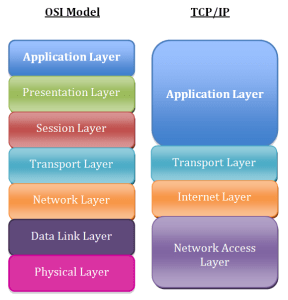Architectures of the Internet
The Internet is a complex system, and there are many different ways to think about its architecture. One way to think about the architecture of the Internet is to divide it into three layers:

- The physical layer: The physical layer is the lowest layer of the Internet architecture. It consists of the physical cables, routers, and other hardware that make up the Internet.
- The network layer: The network layer is the middle layer of the Internet architecture. It is responsible for routing data packets across the Internet.
- The application layer: The application layer is the top layer of the Internet architecture. It consists of the protocols and applications that allow users to interact with the Internet.
Another way to think about the architecture of the Internet is to divide it into two parts:
- The Internet backbone: The Internet backbone is the core of the Internet. It consists of the high-speed links that connect the major Internet service providers (ISPs).
- The Internet edge: The Internet edge is the periphery of the Internet. It consists of the ISPs and the individual computers that connect to the Internet.
The Internet architecture is constantly evolving. New technologies are being developed all the time, and these technologies are changing the way that the Internet works. However, the basic concepts of the Internet architecture remain the same.
Different Types of Internet Architectures
There are many different types of Internet architectures. Some of the most common types include:
- Client-server architecture: The client-server architecture is the most common type of Internet architecture. In a client-server architecture, there are two types of computers: clients and servers. Clients are the computers that request services from servers. Servers are the computers that provide services to clients.
- Peer-to-peer architecture: The peer-to-peer architecture is a type of Internet architecture where all computers are equal. In a peer-to-peer architecture, computers can both request and provide services.
- Hybrid architecture: A hybrid architecture is a type of Internet architecture that combines the client-server architecture and the peer-to-peer architecture. In a hybrid architecture, some computers are clients and some computers are servers.
The Future of Internet Architecture
The future of Internet architecture is uncertain. However, there are a number of trends that are likely to shape the development of Internet architecture in the years to come. These trends include:
- The growth of mobile Internet usage.
- The rise of cloud computing.
- The development of new technologies, such as artificial intelligence and virtual reality.
- The increasing importance of security and privacy.
It is impossible to say for sure what Internet architecture will look like in the future. However, it is clear that it will continue to evolve and change in response to the needs of users.
Conclusion
The architecture of the Internet is a complex topic, but it is important to understand the basic concepts. By understanding the architecture of the Internet, you will be better equipped to use it safely and effectively.